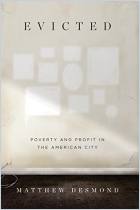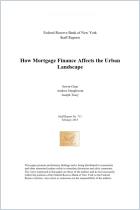Join getAbstract to access the summary!

Join getAbstract to access the summary!
Matthew Desmond
How Homeownership Became the Engine of American Inequality
The New York Times, 2017
What's inside?
Contrary to stereotypes about what historian Molly Michelmore calls “welfare queens,” wealthy homeowners are most likely to receive federal aid.
Recommendation
Social Security. Medicaid. When it comes to federal aid, you’re most likely to think of programs that aid the poorest Americans. However, the US government channels billions of dollars in invisible aid to wealthy homeowners. As President Donald Trump cuts housing programs and poor renters struggle, it’s important to consider how the current system exacerbates inequality. Find insight and empathy in a thought-provoking exploration with Pulitzer Prize–winning author and sociologist Matthew Desmond. getAbstract recommends his analysis to curious policymakers and activists.
Summary
About the Author
Author and sociologist Matthew Desmond wrote the Pulitzer Prize–winning book, Evicted: Poverty and Profit in the American City.






















Comment on this summary